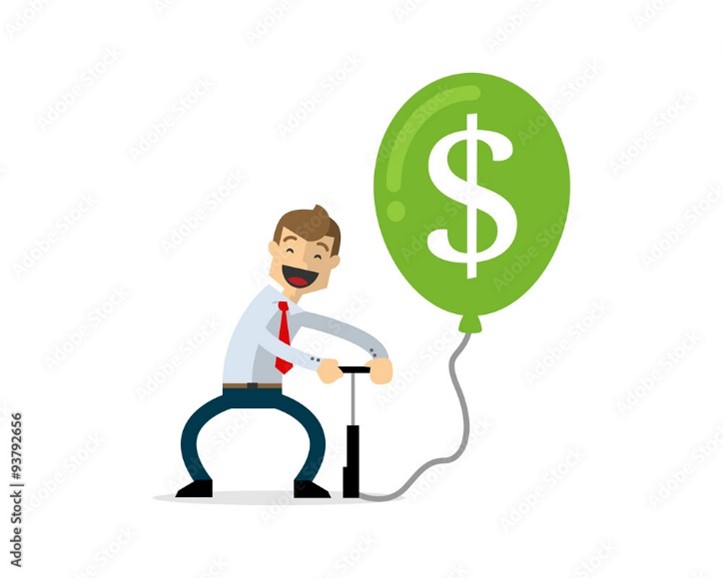
Source: Microsoft file
By Michael O’Neill
Who flushed the Canadian dollar?
A collective “OMG, what happened to the Loonie reverberated across the country, when the Canadian dollar dropped to 72.42 cents (USDCAD 1.3831) against the US dollar this week.
Canadians were not the only gobsmacked population. Australians, New Zealanders, Germans French, and Italians all had a similar query about their currency’s.
The British were the most dumfounded. The BBC reported that Chancellor of the Exchequer Kwasi Kwarteng told his wife “Honey, I Shrunk the Quid.”
Boy, did he ever.
Between Kwarteng and his predecessor Rishi Sunak, GBPUSD devalued 24.5%, peak to trough since January.
GBPUSD was already under pressure before the Liz Truss government announced what was described as the biggest tax giveaway in 50 years. Mr Kwarteng slashed the basic income tax rate to 19%, which the government said gives 30 million people £170 a year more. He canceled a planned corporate tax hike and cut the stamp duty (property tax). He also announced a freeze on energy bills.
Investors voted with their wallets. They sold the pound until it reached an all-time low (since the switch to the decimal system in 1971) and drove 10-year Gilt (UK bonds) yields to levels last seen in the 2008 financial crisis.
The crux of the matter is a lack of confidence in the government.
Kwarteng’s fiscal stimulus package stunned investors as it is at odds with the Bank of England. The BoE recently ended quantitative easing to help lower inflation. Many analysts argue the tax cuts will increase price pressures. They are also concerned as to how the new spending, which nearly doubled the UK budget deficit, will be funded.
Canadians, looking at the Canadian dollar’s 9.3% slide in the same period, should not be feeling smug. It may just be a matter of time before the Loonie catches up.
Think about it.
The Canadian government is run by a man who declared “I don’t think about monetary policy.” Just two weeks ago, Mr Trudeau reinforced that statement.
On September 13, Trudeau announced he would ramp up government spending with a $4.6 billion stimulus package. The largess includes a new dental benefit for children under twelve, a doubling of the GST credit for low-income earners, and a housing benefit.
The latest package is in addition to the $8.9 billion stimulus announced June 16.

Source: Adobe Stock
The Trudeau government’s spending plan is inflationary. Scotiabank Economics Vice President Derek Holt said in a BNNBloomberg interview “any argument that federal spending has not inflamed price pressures does not jibe with economic fundamentals.”
Bank of Canada Governor Tiff Macklem took to twitter September 26 to explain to Canadians why interest rates were going higher. He said, “It is by raising interest rates that we are going to slow spending in the economy, give the economy time to catch up and take the steam out of inflation.”
In a nutshell, the Federal government is pumping cash into the economy at the same time the Bank of Canada is tightening policy to reduce inflation (and spending by default).
Arguably, Canadian interest rates will need to rise higher and remain elevated for longer partly because the fiscal stimulus dilutes the impact of higher rates.
The BoC expects economic growth to slow to 3.5% in 2022 and 1.8% in 2023. They are somewhat delusional in believing inflation will drop to 2.8% in 2023, which even at that level is well above their inflation target.
Even worse, rising interest rates will lead to sticker shock for many mortgage holders when it comes time to renew, reigniting concerns about a housing crisis in the country.
Canada is often touted as a petrocurrency as it has the third largest proven oil reserves. With oil prices at elevated levels and expected to remain for an indefinite period, the Canadian dollar should benefit.
Perhaps, but the benefit is diminishing. Canada’s oil pipelines are at capacity and provincial governments like Quebec are preventing the addition of new infrastructure.
The value of the oil reserves is in attracting foreign capital, but existing government policies are designed to discourage investment. No investment, no added support for the currency.
The Canadian dollar is also suffering from the US interest rate outlook.
The Fed has adopted an inflation-fighting persona and Fed Chair Jerome Powell warned of “pain to come.” The Fed is expected to raise rates another 75 basis points at the November 2 meeting leading a Deutsche Bank economist to predict US rates will peak at 5.0%. Meanwhile, a recent survey among Canadian Bank economists suggest the BoC overnight rate will peak at 4.0%. Widening interest rate differentials is another reason the Canadian dollar will suffer.
The USDCAD technicals point to further gains. USDCAD broke above key Fibonacci resistance with the decisive breach of 1.3470. The level is the 61.8% retracement of the 2002-2008 range, and it targets the 76.4% level of 1.4530.
Investors do not have much confidence that the BoC can engineer a soft landing or that FOMC officials have any idea how high US rates need to rise before inflation returns to target levels.
The British pound has been flushed, and the plumber is boots deep in the toilet bowl, looking for the Canadian dollar.
Chart: USDCAD 22 year with Fibonacci

Source: Bank of Canada





